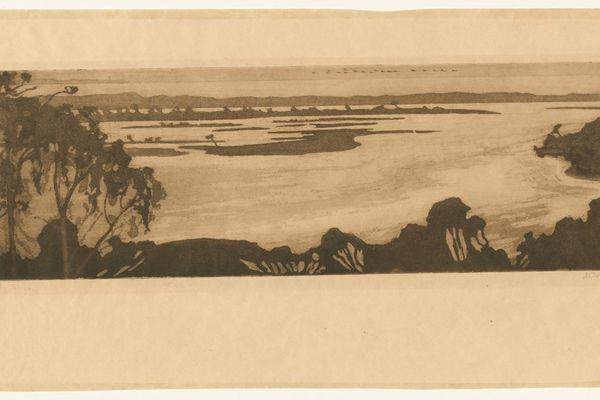Drawn In
14 Jul 2007 – 30 Mar 2008

Mike Brown, (Half lady on chair), 1975, purchased from Pinacotheca Gallery, Melbourne, 1978.
About
By looking closely at drawings we can get a powerful insight into the thoughts, ideas and processes that artists explore in their works.
Beginning with the drawings of George Lambert, Drawn in explores some of the ways in which artists use drawing. George Lambert was a master draughtsman, who captured the changing world around him through his pencil impressions and explored new artistic ideas. This exhibition aims to show the way drawing can make thinking visible.
Exhibition Themes
A dot becomes a line and then a form; each drawing unfolds from a single mark. It is the finished drawing that shows how this simple beginning can be transformed.
More than any other medium drawing is accessible to everyone. Sketching a map, doodling while on the telephone, even writing can be considered drawing. Design, animation, architecture, mathematics and the sciences all use drawing. Individual observations are interpreted through drawing by both the maker and their audience. It is a means to record experience, whether literally or imaginatively. Children draw, and so did Leonardo da Vinci and Albert Einstein. For all three drawing is a means for experimentation and exploration.
The drawings selected include portraits, self-portraits, figures in landscapes and imaginary forms. Even within this relatively narrow range of subjects, the materials and techniques used by each artist show the diversity of drawing.
Children will be able to see that drawing is not one thing. It can be about replicating the world around them, it can be about the creative power of mark making and it can be about the process itself, how each mark predetermines the ones that follow. Some drawings focus on line, some on tone, some use colour and some incorporate all of these elements. The vertical black pen lines used by Richard Larter in his drawing, Untitled, portrait of a woman with a scarf 1975, are confident and bold. This work demonstrates Larter’s unique use of line, for the balance he creates between his marks and the page forms the portrait. Another artist in the exhibition who plays with the arrangement of positive and negative space is Tim Johnson in his drawing MN at Papunya 1987. This drawing uses tone rather than line to hint at a figure in the landscape. Johnson’s airy technique suggests the heat of central Australia, and the Indigenous artist working in the open is shown as part of the country, rather than separate from his surroundings.
Drawing examines the act of looking. Looking out and looking in. Drawing can also link directly to memory and imagination. The charcoal drawings of Sidney Nolan’s rugged band of bushrangers, including Bushranger head with red mask c.1947, display an uncertainty and vulnerability through their smudged and broken lines. In these drawings Nolan is not only examining these men as individuals with thoughts and feelings, he is also using them to think about the bushranger as an expression of Australian identity.
Drawing is a wonderful activity used with skill and humour by a range of Australian artists in this exhibition. Drawing can be neat or messy, cool or hot, it can be about concrete and abstract ideas. Drawn in will give children and their parents the confidence to see that with drawing there is no right way to do it.










